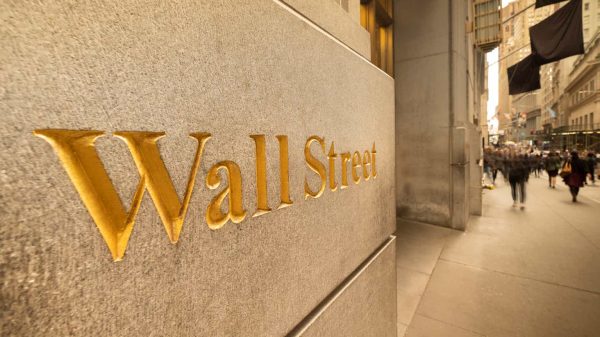After conducting series of deep-dives in housing markets such as in Seattle, Denver, and Phoenix, for example, a general trend seems to be emerging. Major housing markets, like the three mentioned, and for this study — Las Vegas — all experienced supercharged housing activity from 2021 until mid-2022 and has since been cooling off a bit. The rub, however, is that, in most cases, the moderation in housing activity has still left home prices has historical highs when compared to pre-pandemic days. In many of these housing markets, available for-sale inventory has shot up from 2022 to 2023 — but that’s only making up for the plummeting stocks of available homes during the most heated phase of the pandemic-induced, homebuying frenzy.
The Las Vegas housing market is also ways interesting and was one of the biggest victims of the late-2000s housing bubble and crash. Thus, we wanted to turn our attention to “Sin City”, the metro area, and the housing markets of the key cities that make up the area. Based on data sourced from Redfin , we analyzed 12 major cities in the Las Vegas metro area, plus data for the Las Vegas metro area as a whole and the state of Nevada as a whole. The metrics we used to analyze these Las Vegas housing markets are discussed below.
Read on to find out key trends developing in the Las Vegas housing market in 2023.
Las Vegas Housing Market 2023: Overview
Analyzing the data from Redfin, the Las Vegas metro area housing market is displaying signs of a significant moderation in home prices compared with trends during the pandemic years and pre-pandemic years. In the city of Las Vegas proper, home prices peaked in June 2022, when Las Vegas’s median sale price reached an all-time high of $434,000. Since then, prices have declined gradually, so that by March 2023 (the latest data available at the time of publication), Las Vegas’s median sale price was down to $395,000.
Although the median sale price in Las Vegas is down by 6%, from $420,000 in March 2022, to $395,000 in March 2023, in the grander scheme, home prices in Vegas are very high. For a comparison to pre-pandemic conditions, the median sale price in Las Vegas in March 2019 was $275,000. It was actually higher a year later, at $288,000 in March 2020, the same month the pandemic really made its impact felt on the U.S. And every year-over-year period, from March 2017 through March 2022, saw the median sale price in the city of Las Vegas increase. The period March 2022 to March 2023 was the exception.
The experience of the Las Vegas housing market connects to a larger theme, which is that, in the long-term, home prices throughout the area and for the state of Nevada overall are at historic highs. The Fed has been on a rigorous campaign of curbing inflation through rate hikes, which has been felt throughout housing markets through the consequent rise in mortgage rates. While this helped cool off many overheated housing markets of 2021-2022, home prices have only come down so much. In general, homes in the Las Vegas metro area cost markedly more than before the pandemic hit.
The table below breaks out the median sale prices in all the areas we analyzed, from March 2017 through March 2023. We began our data in March 2017 in order to allow for two year-over-year periods — March 2017 to March 2018 and March 2018 to March 2019 — that represent the pre-pandemic era. The table is ranked in order of areas that experienced the greatest year-over-year decline in their median sale price:
Ultimately, there had been a slowdown in housing market activity in Las Vegas from 2022 to 2023, it hasn’t brought prices down to anywhere near where they were pre-pandemic. Looking at the table, you can see that the housing market that saw prices fall the most from March 2022 to 2023 — Winchester, with a decline of 32.4% — is also the city that witnessed that great year-over-year growth the previous one-year period, March 2021 to March 2022, of 41.7%. And the story is similar with the other cities of the Las Vegas metro area market analyzed: Slowing activity and falling prices year-over-year from 2022 to 2023, but prices still hovering around historical highs. For example, the median sale price for the Las Vegas metro area as whole never surpassed $300,000 for every month from March 2017 until November 2020, when it hit $302,000. It then peaked at $450,000 in May and June 2022, before declining to $400,000 in March 2023 — a median sale price that is well above the typical prices of the pre-pandemic era.
Inventory in the Las Vegas Housing Market Has Built Up Considerably
Las Vegas, like many other housing markets, has been experiencing a cooling off in housing market activity, as reflected by an increase in available for-sale inventory. For the Las Vegas housing market, most cities that make up the Las Vegas metro area have experienced large build-ups in their housing inventory year-over-year. The table below details the change in available for-sale inventory in the greater Las Vegas housing market:
Again, the inventory trends for the Las Vegas housing market and its component cities reflect the larger trend of a recent slowdown but levels of inventory that are still lower than pre-pandemic days. Henderson, which experienced the largest year-over-year increase in for-sale inventory from March 2022 to March 2023, also stands out for its level of inventory being comparable to the pre-pandemic years of March 2018 and March 2019. Meanwhile, for the Las Vegas metro area housing market overall, while inventory is up by 45.8% from 4,587 homes in March 2022 to 6,689 homes in March 2023, the latter figure is still well below March 2019’s inventory of 11,609 homes or March 2018’s 9,158 homes.
Thus, while from March 2022 to 2023, the Las Vegas housing market experienced a hiccup in its roaring activity from late 2020, metrics like median sale price and available inventory have not returned to pre-pandemic levels. Despite a slowdown in activity, the Las Vegas housing market is still tight in part due to affordability issues. As mentioned, home prices in the Las Vegas housing market are much higher than pre-pandemic prices and the pace of inflation has kept up with rising wages, so there hasn’t been much of a gain in buying-power from the general increase in wages from especially 2021 onward.
Houses for Sale in the Las Vegas Housing Market Are Sitting on the Market Longer
A further useful metric for housing market activity is the length of time a home for sale spends on the market before being bought up. Redfin refers to this measure as days on market, which represents the monthly median days on market a home for sale sits before being taken off the market. In the Las Vegas metro area, the median number of days on market of a home for sale rose from 18 days in March 2022 to 67 days in March 2023, equal to an annual increase of roughly 272.2% — which means the number of days on market nearly quadrupled in one year. And for the state Nevada’s housing market overall, the trend was very much the same: A year-over-year increase of 235%, from a median number of 20 days on market in March 2022, up to a lofty 67 days on market in March 2023.
In fact, in every housing market we analyzed, the number of days a home for sale spends on the market has lengthened considerably. In the North Las Vegas housing market, for example, the median number of days on market of a home for sale went from just 11 days in March 2022, to an incredible 69 days in March 2023, for a year-over-year increase of 527.3%. In no other year-over-year period between March 2017 and March 2023 did the rate of increase run in the triple digits except from March 2022 to March 2023. In the city of Enterprise, the year-over-year rate of growth was 425%, second only to North Las Vegas: From median days on market of 12% in March 2022, Enterprise’s median reached 63 days on market by the end of March 2023. The housing market with the lowest rate of growth year-over-year was Whitney, in which the median days on market was 30 in March 2022, before rising by 80% to reach 54 days on market in March 2023.
Below is a table detailing the trends in days on market in the 14 areas we analyzed:
Sale-to-List Price Trends in the Las Vegas Housing Market
Tracking the housing metric known as sale-to-list price ratio can sometimes reveal important trends in housing markets. The average sale-to-list price ratio is, “the mean ratio of each home’s sale price divided by their list price covering all homes with a sale date during a given time period. Excludes properties with a sale price 50%,” according to Redfin
RDFN
From March 2017 through March 2023, for the vast majority of months, the sale-to-list ratio in the Las Vegas metro area housing market was less than 100%. The exceptions are two surges: The first was from April 2021 (sale-to-list ratio of 100.2%) to October 2021 (sale-to-list ratio of 100.1%); the second was from January 2022 (sale-to-list ratio of 100.1%) to June 2022 (sale-to-list ratio of 100.4%). Since then, however, the average sale-to-list ratio in the Las Vegas metro area has stumbled hard, reaching a low point of 96.8% in January 2023. The state of Nevada overall experienced a very similar trend and also bottomed out with a sale-to-list ratio of 96.9% in January 2023. Hence, terms of sale-list-price as with the Las Vegas housing market in general, one can expect more “normal” conditions this year, according to the Las Vegas Review-Journal.
Indeed, in the 12 major cities that comprise the Las Vegas metro area, all of their housing markets saw a decline year-over-year in their sale-to-list ratios. In all 12, as of March 2023, have average sale-to-list price ratios of less than 100%, which suggests that it’s currently a buyer’s market. In Spring Valley, it fell the hardest, by 4.2%, from a sale-to-list of 101.5% in March 2022, down to 97.2% in March 2023.
Below is a table detailing the year-over-year decline in sale-to-list ratios across all the areas we analyzed, as well as sale-to-list ratios going back to March 2017:
Percentage of Active Listings With Price Drops Has Risen
The percentage of active listings that experienced price drops is another useful metric of gauging what’s going on in the Las Vegas housing market. Last year, the percentage of active listings with price drops in the Las Vegas metro area was 15% in March 2022. One year later, that percentage had risen by 81.9%, so that 27.4% of active listings, as of March 2023, experienced price drops. Housing markets experiencing an increase in the percentage of listings with price drops suggest a slowing in homebuying, as sellers try to entice buyers by slashing prices. Despite attempts to jumpstart activity, according to KSNV news, homebuying has continued to slow in April 2023.
Looking at the cities that make up the Las Vegas metro area, it is North Las Vegas whose housing market saw the biggest year-over-year increase in the percentage of active listings with price drops. In March 2022, only 12% of active listings in the North Las Vegas housing market had price drops. However, a year later, in March 2023, that percentage had grown by a staggering 146.5%, so that 29.5% of all active listings had price drops that month. Second, behind North Las Vegas, is Sunrise Manor: There, in March 2022, only 9.6% of active listings had price drops, but by March 2023, that percentage had more than doubled to 22.9%. The third Las Vegas housing market to experience a growth in listings with price drops in excess of 100% is Whitney. From March 2022, when only 12% of active listings experienced price drops, the figure rose by 129%, so that by March 2023, an estimated 27.6% of active listings in Whitney experienced price drops that month.
At the core of the metro area, the Las Vegas housing market for the city proper also saw its share of active listings with price drops increase year-over-year. In March 2022, approximately 16.7% of active listings had price drops, before growing by 69.6%, to reach 28.4% of active listings having price drops in March 2023. For the state of Nevada overall, in March 2022, 14.3% of active listings had experienced price drops that month, before rising by 81.1%, to reach a figure of 26% of active listings having price drops in March 2023.
Comparing these levels of active listings with price drops to the pre-pandemic years can be enlightening and provide a broader perspective. For example, the North Las Vegas housing market, which experienced the biggest year-over-year growth in the percentage of active listings with price drops from March 2022 to March 2023, also led the way back in the period March 2018 to March 2019: In March 2018, only 11.7% of North Las Vegas active listings had price drops that month, but a year later, the figure had increased by 141%, so that 28.2% of active listings had price drops in March 2023.
Meanwhile, in the city of Las Vegas housing market, while from March 2022 to March 2023 the share of active listings with price drops grew by 69.6%, from March 2018 to March 2019, it rose by 97.4%: From 13.2% of active listings in March 2018, it essentially doubled to 26% of active listings by the end of March 2019. Thus, for certain areas of the Las Vegas housing market, the year-over-year changes from 2022 to 2023 resemble pre-pandemic conditions.
However, the city in the greater Las Vegas housing market with the largest percentage of active listings experiencing price drops is Henderson. In March 2023, 30.7% of its active listings had price drops that month, up 85.9% from the previous March when the figure was 16.5%.
The Bottom Line on the Las Vegas Housing Market in 2023
Worries about a great crash in the Las Vegas housing market seem unlikely. The correction and cooling off of homebuying activity in the Las Vegas housing market from 2022 to 2023 mirrors that of what has occurred in many other major U.S. cities.
Important things to note about America’s housing market today is that the overwhelming, 90%-plus, majority of current homeowners got their mortgages during the essentially decade-long era of low fed funds rate (initiated during the recovery from the global financial crisis). Unlike during the great housing bubble of the 2000s, far fewer Americans face the jarring prospect of a repayment shock, as happened when adjustable-rate mortgages secured in 2004 had their new rates kick in in 2007, disrupting the delicate economic balance of millions of households whose income could not sustain the new costs.
Instead, the Las Vegas housing market is more likely to stabilize or perhaps continue to slow in terms of activity, but it seems very clear that pre-pandemic home prices in the Las Vegas housing market a very much now something of the past. While other measures of the Vegas housing market do show a return to the pre-Covid era.
Read the full article here













